
Fête de la Musique
The Fête de la Musique is a celebration that takes place every summer solstice on 21 June in cities, towns and villages across France.
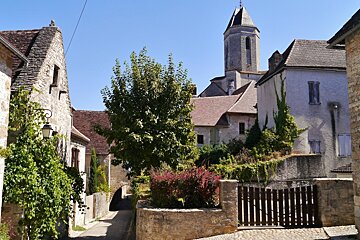
© PWilliamson

© PWilliamson

© PWilliamson

© PWilliamson

© PWilliamson

© PWilliamson
Pretty medieval town in the Lot region to the east of Dordogne
The town of Martel is not, in fact, famous for the brandy (that's Martell with two ll's) but is well known as the capital of truffles and a great producer of walnuts, two of the region's specialities.
The town itself is very pretty, with a central cobbled square that is home to the weekly market.
It has seven towers which dominate one's view, and there is plenty of medieval architecture to discover hidden along Martel's pedestrianised streets.
Centering around the old 'halle', or market hall, which is covered in flowers and climbing plants, the old stone buildings hold a charm that we have come to expect of the Dordogne towns.
The market, hosted on Wednesday and Saturday mornings is full of fresh and seasonal fruit and vegetables, alongside meats such as sausage, duck in every form, foie gras, walnut oil and local cheeses - Rocamadour and Cantal being amongst the better known.
In the centre of the town you will find the Place de la Halle, with an 18th century market hall.
Martel hosts two weekly markets, Wednesday morning and Saturday morning. The town is also known for its annual truffle market in January,

The Fête de la Musique is a celebration that takes place every summer solstice on 21 June in cities, towns and villages across France.

Bastille Day is celebrated across the whole of France with a bang...well, several in fact, fireworks always feature heavily.

Exceptional locations around France, including Dordogne, will be open to visit on the Journées du Patrimoine - a European wide event inspired by by France’s Journées Portes Ouvertes which started in 1984.
Medieval Martel used to be owned by the viscounts of Turenne who held a royal court of appeal in the town. Martel was where Henry, son of King Henry II of England and heir to the throne, died in the 12th century. He had been hiding in Martel having violently protested at his father's imprisonment of his mother, Eleanor of Aquitaine. As a result of Henry's death, their second son, Richard the Lionheart, became the next heir to the English throne.
The 13th century saw a period of growth and economic wealth in the town with many merchants settling here. As the town grew, the suburbs began to fill with the poorer people, keeping the rich inside the city walls. During the Hundred Years' War a second city wall was erected in order to protect the barris (suburbs).
Another period of prosperity followed in the 15th century. Many luxurious homes were built within the original town walls with ornate doorways and mullioned windows. These can still be seen today as you wander the narrow streets.

Also known as the Truffle train, it will take you on a journey of 8 miles (13 Km) round trip, more than 80 meters (260 feet) high cliff, giving a wonderful panorama of the Dordogne Valley.

The Palais de la Raymondie stands next to the market hall in the heart of the medieval town of Martel. This museum contains objects dating from paleolothic, neolithic and Gallo-Roman occupations.
The majority of restaurants and cafés in Martel are situated around the main square, Place de la Halle.
There are several cosy restaurants nestled down the narrow streets so it's worth exploring the town before you decide where to settle for your meal.
Martel's truffle heritage plays a huge part in the town's everyday life. If you can't manage a trip during the truffle season (December and January) then be sure not to miss a trip on Le Chemin de Fer Touristique du Haut-Quercy. This steam (or diesel depending on the day) train will take you along part of the route that truffles used to travel on their way from Martel to Paris. The 13km round trip offers up some stunning scenery and fabulous views.

For over 25 years this park has allowed visitors to come into close (and safe!) encounter with crocodiles, cobras and more than 200 other reptiles and venomous species.

Also known as the Truffle train, it will take you on a journey of 8 miles (13 Km) round trip, more than 80 meters (260 feet) high cliff, giving a wonderful panorama of the Dordogne Valley.
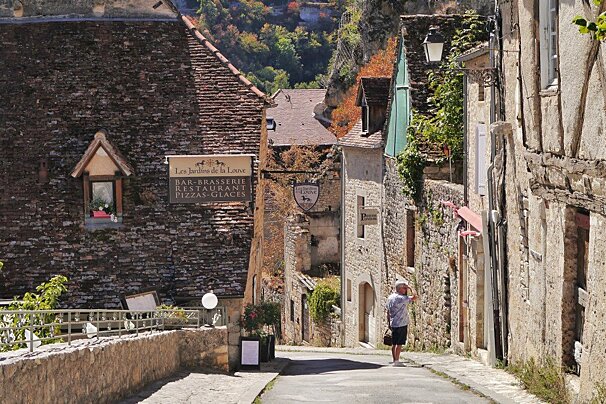
Although just 25km this circular route from Rocamadour does cross some challenging terrain. Partly on river path and some parts on road, you will need to have some experience of cycling to enjoy this route fully.

This Voie Verte (greenway) has been created along the track of an old and now unused railway line.

This short stretch of Voie Verte (greenway) is perfect for families looking to stretch their legs in the Dordogne countryside, without having to conquer any hills climbs.
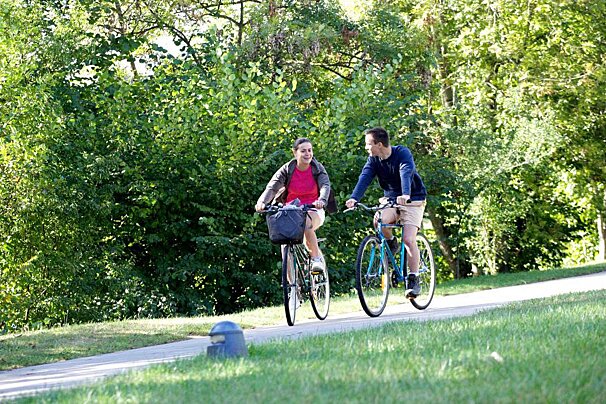
A 23km trail that follows the Isle river through the Perigord countryside from Trelissac (Charrieras) to Marsac (La Roche).
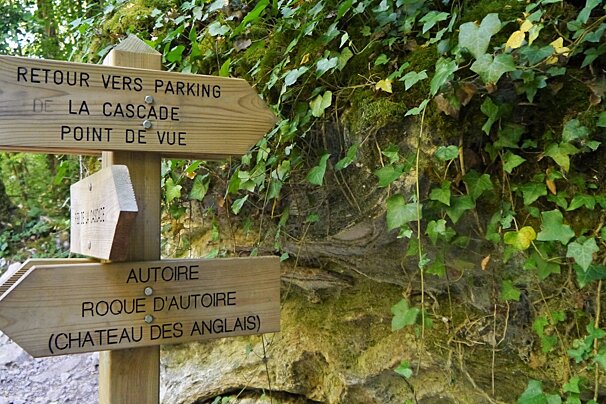
This walk is wonderful and relaxing way to explore the valley of Autoire and the horseshoe shaped cliff band that guards it to the south-west.
Part of a long distance towpath, there is an interesting section cut out of the rocky cliff face between Bouziès and Saint-Cirq Lapopie which was used to drag barges along the river Lot. It's about five kilometres between the two villages and is a stunning section of the river.
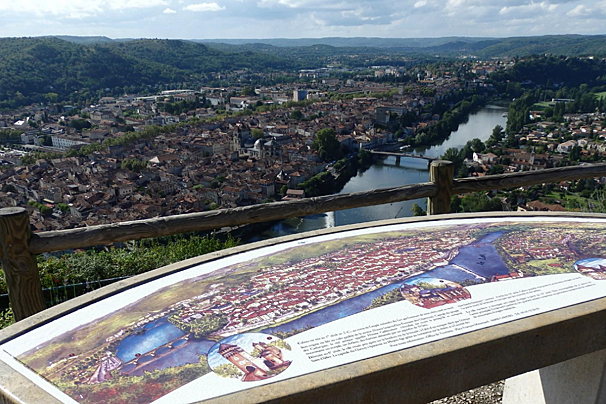
With stunning views over the Lot river and the town of Cahors this walk is worth it just to enjoy the views.
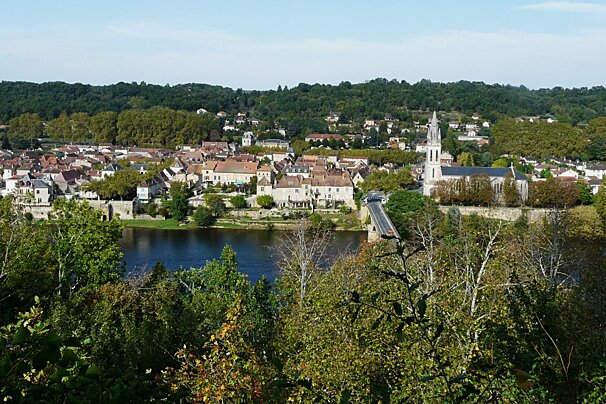
Following part of the GR6 route through the Dordogne this walk takes you from Lalinde on a circular route through the surrounding countryside.

A 23km trail that follows the Isle river through the Perigord countryside from Trelissac (Charrieras) to Marsac (La Roche).

Situated at the foot of Carennac village this watersports centre offers more than just fun on the water! They offer three main activities; canoeing or kayaking, group canoeing with up to six people in the same boat, and adventure trekking with overnight camping out in the wild.

Offering various routes along the Dordogne river to enjoy the sights of the Perigord Noir region. Discover hidden treasures during a relaxing journey down the river.

Enjoy a relaxing day close to nature as you canoe along the river and explore the waterways of this UNESCO World Biosphere Reserve.

Hire a canoe or kayak from this company and you can enjoy a gentle river cruise and the chance to explore the wonderful Dordogne river and its banks.
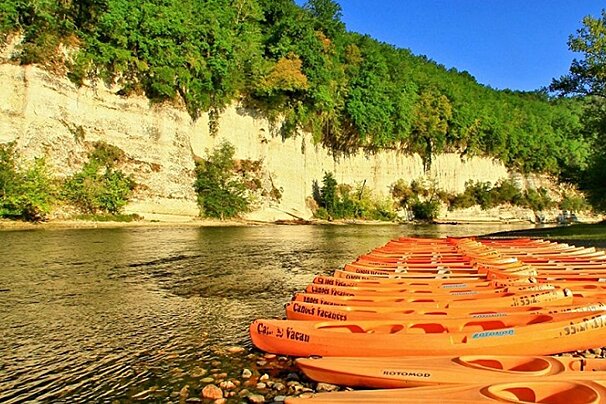
Enjoy a single or multi-day trip down the river Dordogne to town such as Beynac, Castelnaud, Montfort and Fayac.

This area provides water-sports for all ages. Renowned for its architectural heritage and sites of natural beauty, you will find that paddling is a great way to relax and have fun whilst enjoying the scenery.

A recently built house owned by an architect and an interior designer who have created a beautifully finished property that evokes the local style yet is thoroughly modern, exuding flair and taste.

A recently built house owned by an architect and an interior designer who have created a beautifully finished property that evokes the local style yet is thoroughly modern, exuding flair and taste.
There are a couple of small hotels within the town itself.

From the early 11th century, this castle was coveted by several turbulent lords. It then became the summer residence of the bishops of Tulle, and successively had to endure the wars of religion followed by those of the French Revolution.
Martel is located about 15km east of Souillac and 15km north of the River Dordogne.
The countryside is rural with rolling hills and pastureland. Much of the land is used for the cultivation of walnuts.
North of the town lies the elevated limestone plateau of Causse de Martel, which is covered with oak and beech woodland.